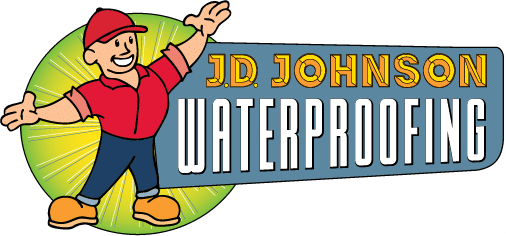Farmer’s Almanac & Your Foundation
Recently the Farmer’s Almanac for 2019-2020 has released how this winter will play out, and for NEO, we should bundle up quickly!
How Much Will It Snow?
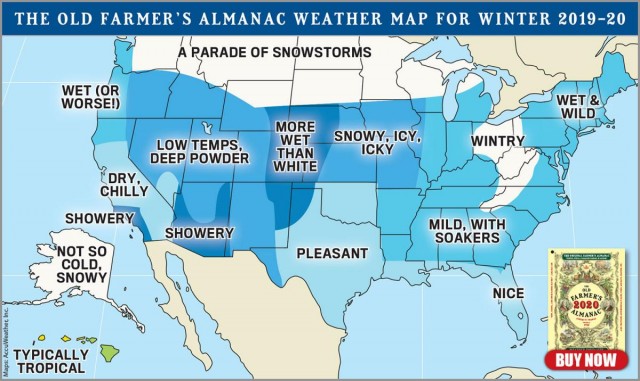
This snow overload will include storms pummeling Washington state and points eastward across the northern-tier states into Michigan. This could mean a repeat of last winter’s record-breaking extremes for the normally rain-soaked Northwest, including the Snowpocalypse that dumped 20.2 inches on Seattle in February.”
For some parts of the country, frigid and frosty conditions will last well into spring, bringing little relief to the winter-weary. “This could feel like the never-ending winter, particularly in the Midwest and east to the Ohio Valley and the Appalachians, where wintery weather will last well into March and even through the first days of spring,” says Almanac editor Janice Stillman.
What Does This Mean For My Home?
As a result of freezing temperatures, water will freeze beneath the surface. This will cause a frost heave, and that’s not good. This occurs when the ice is restrained by underlying soil and eventually solidifies in a lens shape. These ice lenses are strong enough to crack pavements, which can crack your home’s foundation. There are ways to decrease the risk of further damage if your home already shows signs of damage.
I-Beam Wall Braces
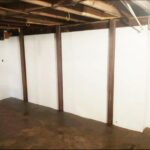
Interior bracing is a proven method of stabilizing bowed foundation walls. Strengthening the wall with steel columns is an economical stabilizing method. The foundation wall can be strengthened from the inside, avoiding excavation. I-Beam wall braces are ideal for excess foundation shifting, clay blocks, textured brick-patterned concrete, and traditional block walls.
Carbon Fiber Bracing
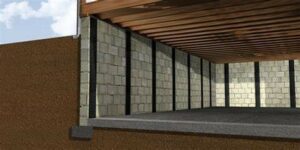
Carbon fiber wall supports are a great solution for bowing walls that ties the foundation base footing and the house framing together. In our experience, carbon fiber is ideal for both traditional concrete masonry blocks and smooth-faced concrete foundation walls to repair bowing walls and all foundation cracks. Suppose carbon fiber is ideal for the unique home structural application. In that case, the benefit of carbon fiber is that it provides a nice semi-smooth, flat, and nearly invisible repair when painted. The repair is maintenance-free and can be framed over (or left exposed) without taking square footage from a basement.
A carbon fiber crack sealing method for eliminating leaks from vertical shrinkage cracks is a great option for traditional concrete masonry blocks (painted or non-painted blocks). This method strengthens and reinforces your cracked or bowing foundation or basement wall while providing a watertight barrier to keep the crack dry at the same time. This method is also great for smooth-faced poured concrete walls, eliminating the need to excessively grind the concrete surface to get a smooth finish for the carbon fiber system to adhere to.
Epoxy Injection System
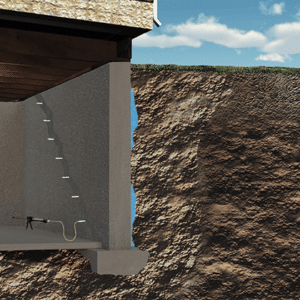
These poured wall cracks can leak or need to be structurally repaired. This all can be done from the inside of the foundation, eliminating the need for costly exterior excavation and repair.
An epoxy injection system bonds the concrete from the inside, creating a rigid, solid repair. This makes the wall stronger than it ever was before. We seal the crack from the bottom to the top by first covering the crack with topical epoxy with plastic injection ports installed along the length of the crack. Second, we allow the surface epoxy to fully cure before injecting a liquid epoxy resin into the crack.
